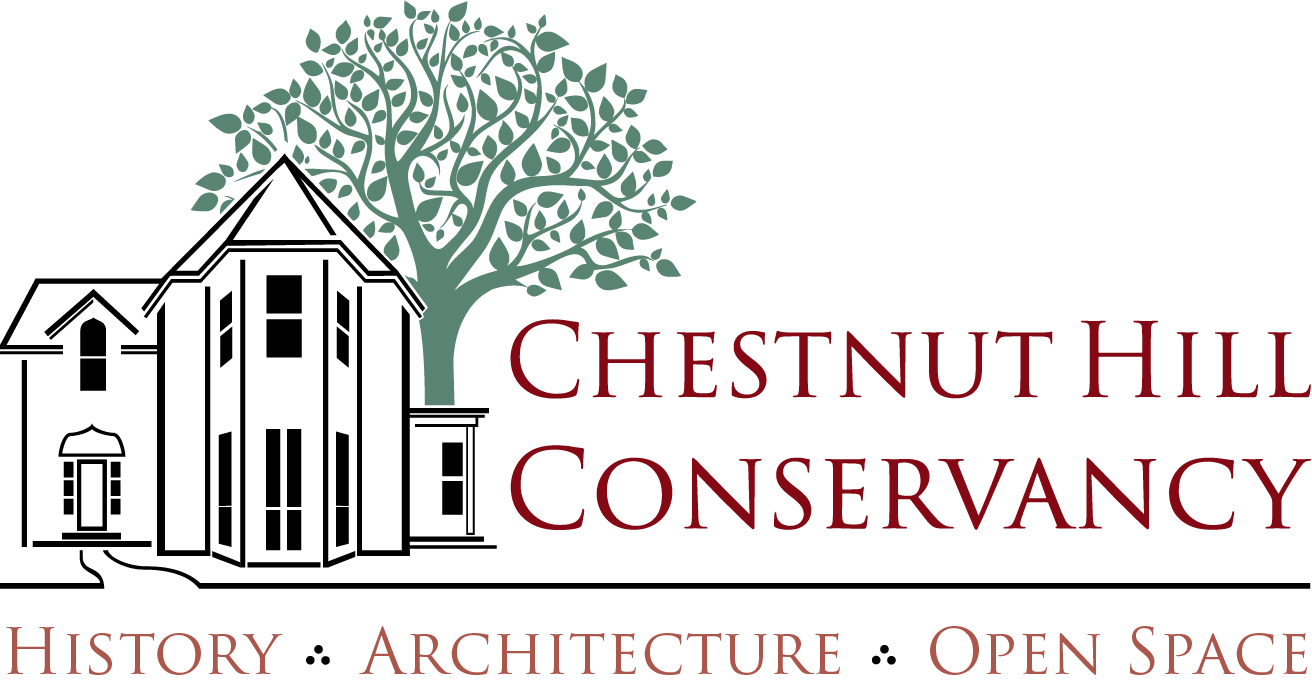

Recognizing that the Chestnut Hill community was not prepared to participate in the City’s Upper Northwest District Plan, in 2016 the Chestnut Hill Conservancy secured funding from the William Penn Foundation to create a “Residential Conservation, Preservation, and Development Study.” The Conservancy invited the Chestnut Hill Community Association, Chestnut Hill Business District, and others to help undertake this effort. The study, which finished its work in May 2017, generated three primary results: 1) three guiding principles, 2) a set of development management tools, and 3) a detailed set of maps illustrating the built and natural resources in Chestnut Hill
The three guiding principles generated by the Study are: 1) Preserve Architectural Integrity and Cultural Resources, 2) Manage Subdivision and Redevelopment of Land, and 3) Protect the Wissahickon Watershed. The report of development management tools is organized thematically by these guiding principles and provides strategies for anticipating and guiding change in Chestnut Hill. View the priority projects and next steps HERE. View the tools HERE. The maps show character-defining aspects of Chestnut Hill including its environmental features, public and protected lands, historically significant architecture, and zoning. View the maps HERE.
These results will guide community efforts to conserve open space in the challenged Wissahickon Watershed. Along with improving the water quality of the Wissahickon, the Study will be used to inform community decisions regarding the protection of historically significant architecture and priority areas for new development. This information will be especially useful in the fall of 2017, when the Philadelphia City Planning Commission commences the Upper Northwest Philadelphia District Plan, one of the final elements of the city’s Philadelphia2035 Comprehensive Plan.
John Landis, Chair of City and Regional Planning at the University of Pennsylvania and member of the Study’s Steering Committee observes, “As a guiding principle, we need to ask ourselves: what do we want to see, not what do we want to prevent?” This Study has given Chestnut Hill as a community the tools to begin to answer this question.
The Study was conducted at a time when the larger City of Philadelphia is considering the future of its historic resources, both in the formation of Mayor Kenney’s Historic Preservation Task Force and in the National Trust for Historic Preservation’s designation of the Historic Neighborhoods of Philadelphia as a “National Treasure.” CH Conservancy has a fifty-year legacy as a driver of preservation in the city and is positioned to contribute to this larger discussion about policy tools for managing change in Philadelphia.
 In April, as part of the Study, the Chestnut Hill Conservancy hosted the Visionaries Roundtable to catalyze this public discussion of preservation and change in the wake of unprecedented urban expansion in Chestnut Hill and throughout Philadelphia. Visionaries in the architecture and urban planning fields led the dialogue with input from the public. The event commemorated a similar discussion Chestnut Hill Conservancy (then Historical Society) hosted nearly 50 years ago that featured renowned architects Louis Kahn, Robert Venturi, and Romaldo Giurgola. Watch a video of the Visionaries Roundtable discussion HERE.
In April, as part of the Study, the Chestnut Hill Conservancy hosted the Visionaries Roundtable to catalyze this public discussion of preservation and change in the wake of unprecedented urban expansion in Chestnut Hill and throughout Philadelphia. Visionaries in the architecture and urban planning fields led the dialogue with input from the public. The event commemorated a similar discussion Chestnut Hill Conservancy (then Historical Society) hosted nearly 50 years ago that featured renowned architects Louis Kahn, Robert Venturi, and Romaldo Giurgola. Watch a video of the Visionaries Roundtable discussion HERE.
This Study was funded in part by a generous grant from the William Penn Foundation’s Watershed Protection program and was led by a Steering Committee of community professionals, with assistance from the Natural Lands Trust, Philadelphia University, the University of Pennsylvania, and many community stakeholders.
If you have any inquiries or comments, please contact Executive Director Lori Salganicoff: lori@chconservancy.org or 215-247-9329 x201.
- Co-Chair and Project Manager Lori Salganicoff · Preservationist; Planner (CH Conservancy)
- Co-Chair Joyce Lenhardt · Architect (CHCA)
- Elie-Antoine Atallah · Architect
- Richard Bartholomew · Planner; Architect
- Barbara Baumbach · Realtor (CHBD)
- Patricia Cove · Preservationist; Designer (CH Conservancy, CHCA)
- Steve Gendler · Economist; Developer (CHCA)
- John Landis · Planner, University of Pennsylvania (CHCA)
- Maura McCarthy · Conservationist (FOW)
- Mindy O’Connor · Architect (CH Conservancy)
- Patricia Pregmon · Easement Attorney
- James Querry · Landscape Architect, Philadelphia University
- Peter Saylor · Architect (CH Conservancy)
- Richard Snowden · Developer (CH Conservancy, CHCA, CHBD)
- Ian Hegarty · Philadelphia Planning Commission
PRIOR COMMUNITY PLANS
Germantown Avenue Urban Design Guidelines, authored in 1990 by CHCA, CH Conservancy, and CHBD leaders
Mobilize to Thrive: Chestnut Hill Regional Area Study, Delaware Valley Regional Planning Commission
Protect Our Watershed Land Conservation and Stewardship Plan (2006-07), Friends of the Wissahickon
‘Chestnut Hill Historic District’ Application to the National Register of Historic Places (1985), Chestnut Hill Conservancy
Chestnut Hill Land-Use Guidelines (1982), Chestnut Hill Community Association
- January 26, 2017 – 7:30 – 10:00 AM – Steering Committee kick-off meeting
- February 2, 2017 – 6:00 PM – Joint meeting with the Historic District Advisory Committee and the Land-Use Planning and Zoning Committee
- February 23, 2017 – 7:30 – 10:00 AM – Steering Committee meeting
- March, 2017 – to be determined
- April 13, 2017 – 7:30 – 10:00 AM – Steering Committee meeting
- April 21, 2017 – 6:00 PM – CH Conservancy’s special program Visionaries Roundtable: Preservation and Change in Chestnut Hill’s Future
- May 11, 2017 – 7:30 – 10:00 AM – Steering Committee final meeting
- May 31, 2017 – 6:30 – Unveiling of report to key stakeholders
